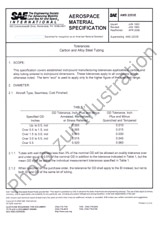Wir benötigen Ihre Einwilligung zur Verwendung der einzelnen Daten, damit Sie unter anderem Informationen zu Ihren Interessen einsehen können. Klicken Sie auf "OK", um Ihre Zustimmung zu erteilen.

SAE J413
Mechanical Properties of Heat Treated Wrought Steels
Name übersetzen
NORM herausgegeben am 1.10.2011
Informationen über die Norm:
Bezeichnung normen: SAE J413
Anmerkung: Nicht mehr aktuell
Ausgabedatum normen: 1.10.2011
SKU: NS-663830
Land: Amerikanische technische Norm
Kategorie: Technische Normen SAE
Empfehlungen:
Aktualisierung der technischen Normen
Wollen Sie sich sicher sein, dass Sie nur die gültigen technischen Normen verwenden?
Wir bieten Ihnen eine Lösung, die Ihnen eine Monatsübersicht über die Aktualität der von Ihnen angewandten Normen sicher stellt.
Brauchen Sie mehr Informationen? Sehen Sie sich diese Seite an.



 Cookies
Cookies
